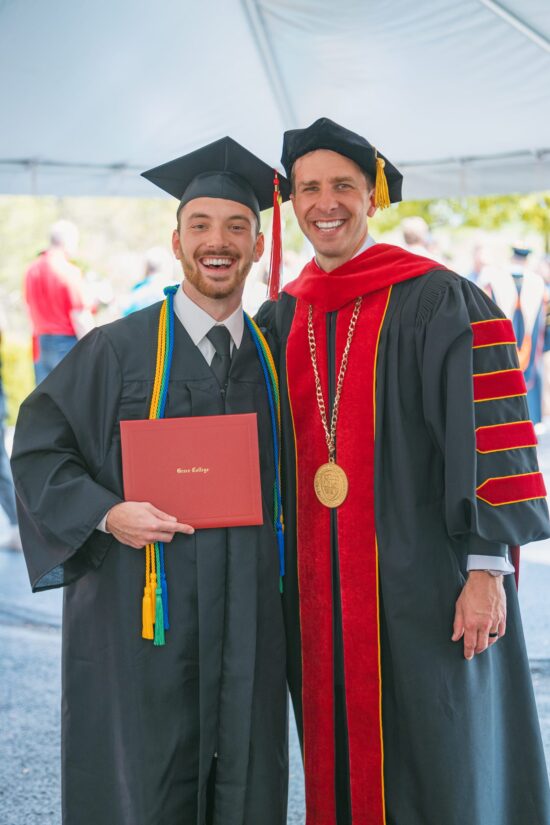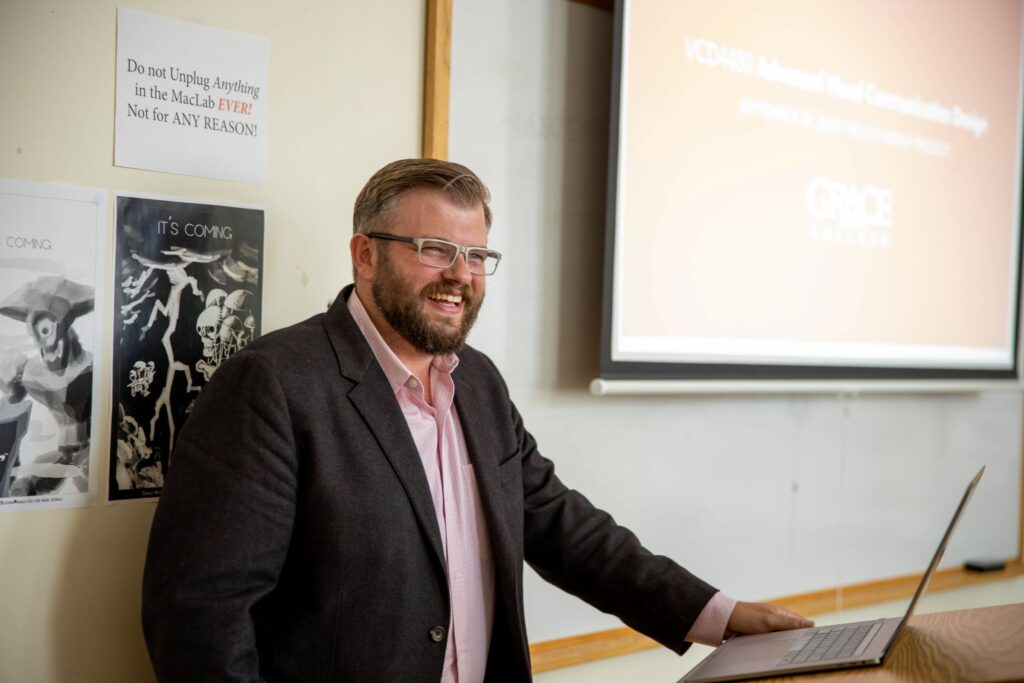4. What other opportunities have you had to use your visual communication degree?
I have been designing on my own since 2014. I worked at Todd Allen Design (TAD), a full-service creative agency, then at Da-Lite, an audio-visual equipment supplier, and then I started my own studio, Blue Note. Every iteration of my career has been a learning process.
I also do a lot of work as a subcontractor for Beyond Marketing in Charlotte, North Carolina. I’ve become their designated brand specialist. Through them, I’ve done work for TotalEnergies, one of the largest energy providers in the world; the International Skydiving Museum and Hall of Fame; and a project called Carolina Long Bay. I’ve done more national and global projects with them, which has been a lot of fun.
With Blue Note, I create logos and identity systems, which are guides for the visual elements of a brand. Since starting Blue Note, I’ve designed more than 150 logos and more than 50 identity systems for companies, including Light Rail, The Village at Winona, Wildman, Pottery Bayou, Oak and Alley, B+B Courthouse Market, Rocksteady Pizza Parlour, and Clearly Kosciusko.
5. Blue Note is a unique studio name. How did you come up with it?
I started out in punk and indie rock music, and eventually, I got really into blues. Within the blues and jazz notes, you’re working with a very standard scale, and changing just one or two notes in that scale makes it a blues scale. That one little change makes the scale more soulful and gives it more character. Musicians call the one changed note the “blue note.” The whole idea is that paying attention to the little details can make all the difference.
My goal with all of my clients is to help them discover, or rediscover, why the product they are selling or the service they are providing is something they should be passionate about. Every company starts with some kind of passion, but as companies grow, that passion gets diluted. My job is to bring the soul back into their organization through branding and storytelling. I ask questions such as, “What story are you trying to tell?” and “Why are you doing what you are doing?” and “How can we represent that in the design solutions we provide?”
6. How does your experience shape the way you teach design students at Grace?
My experience really drives the classroom. Design jobs require students to be able to create work with meaning, work with clients, follow a brief, meet deadlines, and create presentations and multi-deliverable systems. These soft skills are not only needed to conceptualize but also communicate and get buy-in for your designs. This is the end goal in the classroom. Of course, you’ve also got to learn programs, but being able to function intelligently in the professional world is important. I’ve worked with designers who have gotten a BFA and graduated from art school, and they’re great artists, but a lot of times, they don’t have the soft skills, and they don’t know how to work with clients. Our goal at Grace is to develop well-rounded students.
At Grace, our professors have experience in the fields they teach, and they will help you grow in your passions and in the skills you’ll need to turn your interests into a career.
If you dream of pursuing a career in visual communication, learn more about Grace’s visual communication degree and take Grace’s quiz to see which visual communication design concentration fits you.





